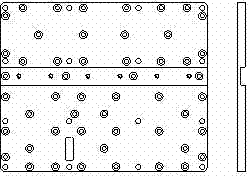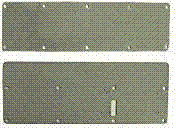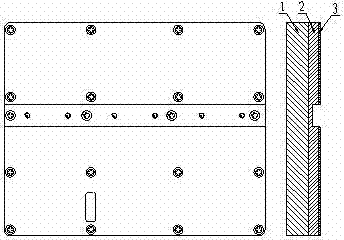Method for reducing grounding resistance and thermal resistance of printed board
A grounding resistance and printed board technology, applied in the direction of assembling printed circuits with electrical components, can solve the problems of large grounding resistance and thermal resistance of printed boards, reduce grounding resistance and thermal resistance, and ensure technical indicators and reliability. sexual effect
- Summary
- Abstract
- Description
- Claims
- Application Information
AI Technical Summary
Problems solved by technology
Method used
Image
Examples
Embodiment Construction
[0013] The present invention is further explained below in conjunction with the examples, but the examples do not limit the present invention in any form.
[0014] (1) Prepare the copper carrier plate and clean it with alcohol cotton balls, see figure 1 .
[0015] (2) Fasten the carrier board to the cavity with screws.
[0016] (3) Clean the printed board with alcohol cotton ball.
[0017] (4) Apply a layer of solder paste evenly on the printed board through the screen, see figure 2 .
[0018] (5) Fasten the printed board coated with solder paste on the carrier board with screws, see image 3 .
[0019] (6) Clean the outflowing solder paste with alcohol cotton ball.
[0020] (7) Bake the fastened cavity, carrier board and printed board in a high-temperature oven at a temperature of 240°C for 5 minutes. It is necessary to ensure that the printed board does not have blisters, the metal color difference does not change much, and there is no obvious gap between the printed...
PUM
 Login to View More
Login to View More Abstract
Description
Claims
Application Information
 Login to View More
Login to View More - R&D
- Intellectual Property
- Life Sciences
- Materials
- Tech Scout
- Unparalleled Data Quality
- Higher Quality Content
- 60% Fewer Hallucinations
Browse by: Latest US Patents, China's latest patents, Technical Efficacy Thesaurus, Application Domain, Technology Topic, Popular Technical Reports.
© 2025 PatSnap. All rights reserved.Legal|Privacy policy|Modern Slavery Act Transparency Statement|Sitemap|About US| Contact US: help@patsnap.com



